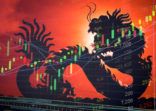“Most risks and uncertainties in China are going to be reduced in 2018, and investors will become more confident about capturing the opportunities,” Lacaille said at a press briefing in Hong Kong today. The reduction of uncertainty around policy is apparent following the congress of the Communist Party of China in October and subsequent policy announcements, he added.
The firm is overweight China equities, in particular the e-commerce and technology sectors, following the theme of shift to consumption and consumer-oriented businesses, he said.
Lacaille noted also that Southeast Asia would continue to benefit from China’s growth, which supports trade and earnings of companies in the region.
“We’ve seen the absolute household consumption rising quite rapidly, almost doubling between 2009 and 2016,” Lacaille said. “It’s offering really interesting investment opportunities, in healthcare, technology, e-commerce.”
Even though some companies in these sectors have reached high valuations, their strong growth justifies high return expectations, he added.
China’s private consumption in December 2016 was equal to 39.2% of the country’s GDP, up from 38.1% a year earlier. It has gradually increased since bottoming out in 2010.
China’s economy is decelerating in an orderly fashion, Lacaille believes, noting that the country’s GDP growth has stabilised in the 6.5%-7% range. The hard landing that many investors had been worried about for the last several years has not materialised.
The stabilisation can be attributed to China’s transition to a new economy model, based on services rather than industry and construction. “Unlike some other nations around the world China has succeeded in changing the composition of its economy,” Lacaille said.
The contribution of the services sector to the country’s GDP first surpassed that of heavy industry in 2013, and the gap has been widening ever since, he said. Today services are credited for around 52% of the GDP. Industry and construction for around 40%.
China’s government has also been able to slow the expansion of credit, which is still perceived as a risk to the financial stability of the country. “Rapid credit expansion creates concerns whether investment are allocated efficiently,” Lacaille said. “Getting control over less regulated parts of the credit system is very important.”
The principal risk Lacaille sees stemming from China is that the contraction will be much sharper or faster than expected. “In cooling the economy, which is a combination of regulatory constraints and other actions, there’s always a chance that that process happens too quickly,” he said. “These policies are very hard to fine-tune.”
Another risk is geopolitical. “If the rhetoric [in the US] around trade turns into barriers, tariffs or other brakes on trade between China and the US, that would be a serious setback,” Lacaille said. This risk “is not discounted by markets” today, he added.

















